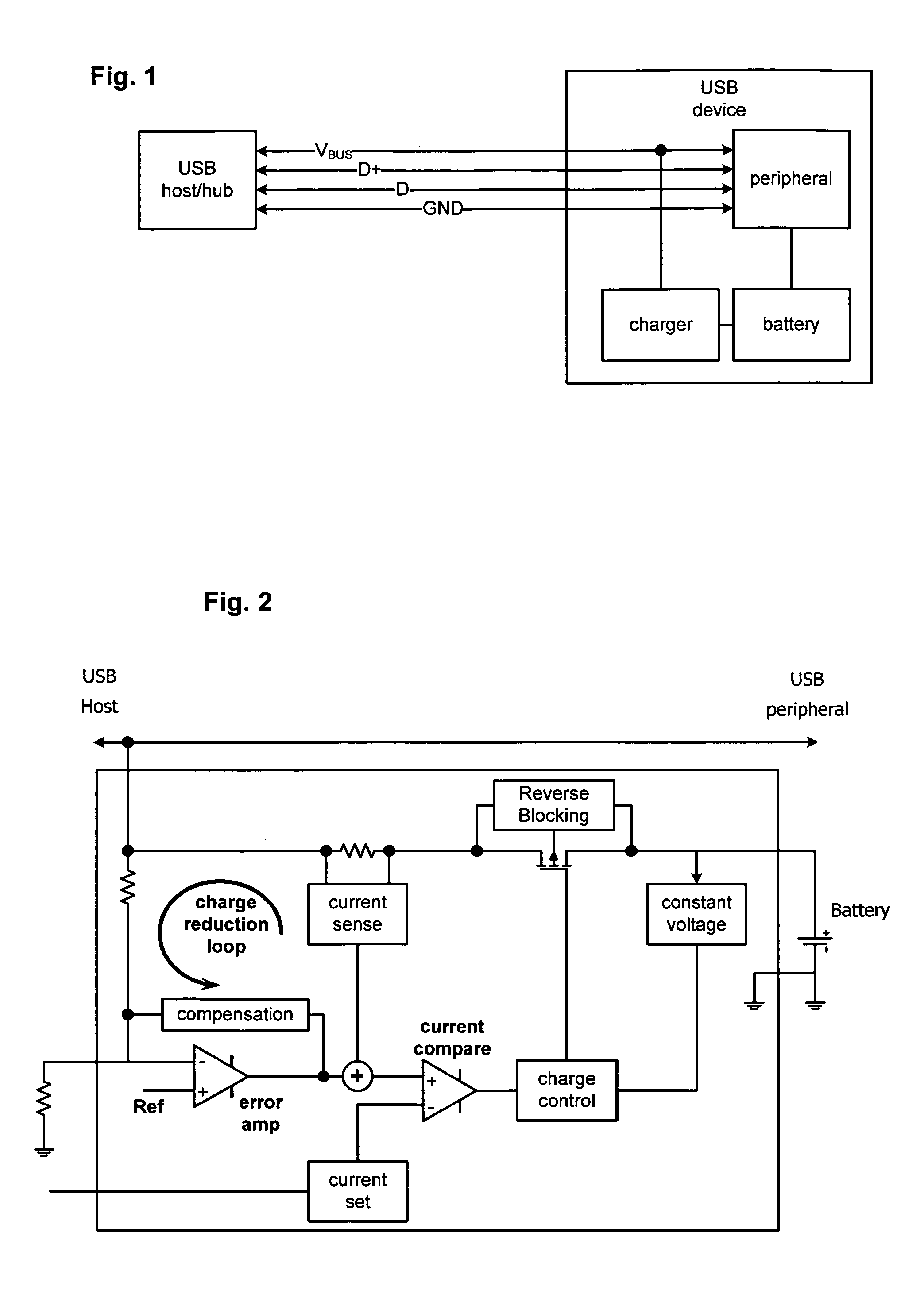USB battery charger
a technology of usb battery and charger, which is applied in the direction of electric power, electric vehicles, transportation and packaging, etc., to achieve the effects of reducing vbus, reducing charge current, and reducing vbus
- Summary
- Abstract
- Description
- Claims
- Application Information
AI Technical Summary
Benefits of technology
Problems solved by technology
Method used
Image
Examples
Embodiment Construction
[0009] The present invention includes a charger for batteries in USB devices. As shown in FIG. 1, the charger is typically included, along with a battery, as part of a USB device. In most cases (but not in all cases) the USB device would also include some other functional block such as a cellular telephone or personal music player. In FIG. 1, this functional block is generically labeled “USB peripheral.” The charger is powered by a USB host via the USB VBUS circuit. The VBUS circuit is also typically used to power the USB peripheral. The charger uses power from the USB VBUS circuit to charge the battery enabling operation of the USB device when disconnected from the USB host (or hub).
[0010] One possible implementation for the USB charger is shown in FIG. 2. As shown in that figure, the charger includes a path for current to flow from the USB VBUS circuit to the battery. The path includes a current sense resistor and a transistor. In this case, the transistor is a MOSFET, but there ...
PUM
 Login to View More
Login to View More Abstract
Description
Claims
Application Information
 Login to View More
Login to View More - R&D
- Intellectual Property
- Life Sciences
- Materials
- Tech Scout
- Unparalleled Data Quality
- Higher Quality Content
- 60% Fewer Hallucinations
Browse by: Latest US Patents, China's latest patents, Technical Efficacy Thesaurus, Application Domain, Technology Topic, Popular Technical Reports.
© 2025 PatSnap. All rights reserved.Legal|Privacy policy|Modern Slavery Act Transparency Statement|Sitemap|About US| Contact US: help@patsnap.com

